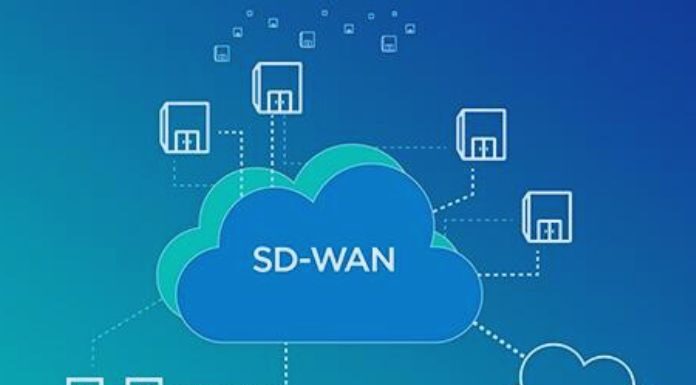Organizations are increasingly turning to multi-cloud environments to take full advantage of cloud deployment. A transformed multi-cloud architecture simplifies operations, reduces network latency and alleviates IT problems. A Secure SD-WAN solution can control emerging security risks that ensure consistent security policies across platforms, clouds and devices. High-performance, fast networks are essential for companies today but cannot be taken for granted.
Because despite regular upgrades to better hardware and new devices – from NGFWs with higher capacity to WAN optimizers to proxies – network performance could be better. A key problem is legacy WAN architectures that cannot support digital transformation and developments, such as cloud-first and mobility-first architectures. Troubleshooting can quickly become a challenge in such a legacy architecture. For example, poor video quality can be caused by anything: the WAN optimizer, QoS devices, insufficient WAN bandwidth, or network delays.
With so many different devices from various vendors and complex network traffic patterns, it’s almost impossible to pinpoint problems as they arise. Another challenge is efficiently routing traffic from branch offices and remote workers to the cloud. Companies usually use several cloud providers here, although the interconnection of these different cloud environments is easy. Typically high-bandwidth private connections are used, but these are not automated and can take days or weeks to deploy. Also, they are isolated islands, so traffic may need to be routed through an already overloaded data center.
Secure SD-WAN For SaaS Architectures
For companies using a single cloud service, the solution to these problems and challenges lies in establishing a SaaS-enabled architecture. This requires an SD-WAN device at each site, ubiquitous internet access, and strategically placed SD-WAN gateways to enable efficient routing to the cloud from each (mobile) site.
Notwithstanding, to control the assault surface, which the complete Web has essentially expanded, a solid SD-WAN engineering is required that coordinates completely functional security strategies, including malware insurance, sandboxing, interruption counteraction, NGFW, and information misfortune avoidance for each area and organization passage gives. Secure SD-WAN programming recognizes traffic streams to SaaS applications and isolates that traffic locally.
By applying complex strategies for best-way determination and QoS, Secure SD-WAN guarantees that security and application execution remain closely connected and neither trade-offs. Extensive mechanization authorizes security strategies across gadgets, areas and clients.
Secure SD-WAN In Multi-Cloud Architectures
However, companies rely on more than one cloud service. More than a simple SaaS environment is needed. In that case, they need a multi-cloud architecture to ensure performance that meets their increased business requirements. A multi-cloud environment can include various public IaaS and SaaS clouds, often in addition to a dedicated on-premises cloud. This network model generally avoids vendor lock-in, minimizes costs, and improves disaster recovery options, although it also comes with some challenges.
Consider a commonplace CRM application. Organizations today can pick a cloud supplier that ideally matches cost and usefulness. Subsequently, the web administration viewpoints, application, information base and stockpiling can be given on various distributed computing stages. To utilize the whole application right away, these three veils of mist should be connected, which brings a few entanglements. For instance, network supervisors are confronted with how information traffic can be ideally steered between the conditions and how to guarantee that important client information isn’t exfiltrated from one of the mists.
For their purposes, as well, the arrangement read in Secure SD-WAN. This offers a worldwide, adaptable cloud-local design that furnishes cloud occasions with a basic mouse click, whether or not they are public, half and half or on-premises mists. In doing so, the SD-WAN foundation takes out the difficulties of multi-cloud availability via consequently recognizing and consistently laying out a powerful overlay IPSec network for both the information and control plane to each cloud.
The geography is then finished in minutes, completely scrambled, and the control plane across the different mists is standardized through the IPSec burrow cross-section to guarantee full worldwide permeability of the organization. When a representative or business action utilizes a door administration, Secure SD-WAN intervenes in this capacity by naturally deciding the closest entryway anyone could hope to find in a membership. It then coordinates between the on-premises or other cloud conditions towards this door without requiring the client to sign into the cloud membership.
Multi-Cloud Visibility
However, a key advantage of this transformed multi-cloud architecture is that the SD-WAN software gives network managers complete visibility into the deployment of each workload, allowing them to see at a glance who is accessing it and which users are active. When an external actor attacks a workload, it can be blocked with a single click. At the same time, teams can access deep analytics that gives them further insight into the attack:
- Who is trying to bring down the service?
- What type of attack vector is used?
- How it can be disarmed.
In addition, network managers also benefit from real-time analysis of end-to-end applications and performance trends. A complete overview of device utilization enables efficient performance management: if a device’s CPU utilization exceeds a certain threshold, an automatic scaling policy can be created to instantiate more devices and increase overall performance.
Conclusion
Multi-cloud environments are now a reality for many companies, especially larger ones. In doing as such, they face the way that different cloud suppliers have various qualities, abilities, and geographic impressions, which stances difficulties to oversee and get.
In any case, a solid SD-WAN that unites organizing, security, permeability, robotization, and execution capacities incorporated into the design starting from the earliest stage can assist them with exploring the intricacies of multi-cloud conditions while receiving the rewards that these cloud organizations bring to your organization and application climate, as well as functional expenses.
Also Read: Agile Methods Vs DevOps: What Are The Differences?


